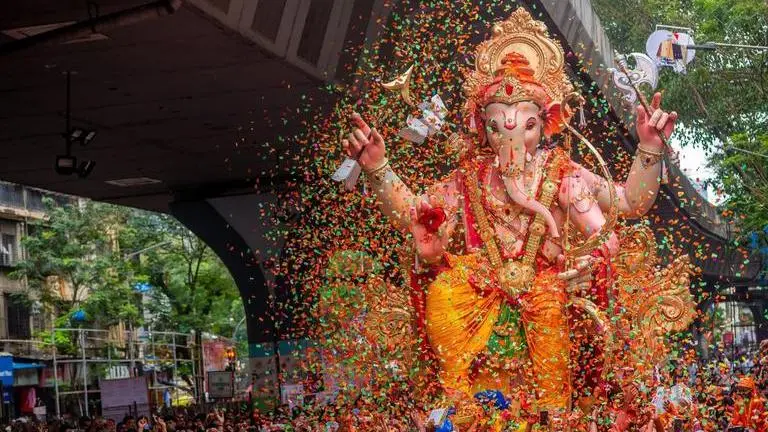Updated 8 September 2023 at 17:56 IST
Ganesh Chaturthi 2023: Know the date, folklore behind Lord Ganesha festival
This year, Ganesh Chaturthi will be celebrated from September 19-28. Know the folklore behind the festival dedicated to Lord Ganesha's worship.
- Lifestyle News
- 3 min read

In Hinduism, Ganesh Chaturthi, also known as Vinayak Chaturthi, is a 10-day festival that marks the birth of the god of prosperity and wisdom, Lord Ganesha. This auspicious occasion, from Ganesh Chathurthi to Ganesh Visarjan, is collectively termed as Ganpati/Ganesh Mahotsav. According to the Hindu calendar, this grand celebration commences on the fourth day (Chaturthi) of the month of Bhadrapada, typically falling in August-September.
2 things you need to know
- Ganesh Chaturthi 2023 will fall on September 19.
- It's a 10-day festival of joy, devotion and grand celebrations.
When is Ganesh Chaturthi 2023?
This year, Ganesh Chaturthi is set to commence on September 19. The Ganesh Utsav festival spans ten joyous days, concluding with the Ganesha Visarjan on Thursday, September 28.
Ganesh Chaturthi 2023: Tale behind the festival
The name Ganesha/Ganesh can be derived from the words Gana and Ganas, which mean Lord of the People and Lord of the Ganas, signifying his role as the chief of Ganas. Ganesh Chaturthi celebration is believed to have been first observed by Chatrapati Shivaji Maharaj during the Maratha era. Among the many birth stories associated with Lord Ganesha, one of the most prominent is the mythological tale of his creation.
Advertisement
Once upon a time, Goddess Parvati was preparing for a bath at her residence on Mount Kailash. To safeguard her privacy, she assigned the duty of guarding the door to Nandi, Lord Shiva's faithful bull. However, when Lord Shiva arrived home and sought entry, Nandi's loyalty to him compelled him to allow Shiva inside. Parvati, aggrieved by this breach of trust, decided to create her own loyal son, Ganesha, from the turmeric paste used for her bath.
(Lord Ganesha was created from the turmeric paste used for baths by Goddess Parvati | Image: Pinterest)
Advertisement
In a subsequent instance, Parvati entrusted Ganesha with guarding the entrance while she bathed. When Shiva returned and found himself denied entry by the unfamiliar boy, he grew furious. Sending his army to confront Ganesha proved futile, for Ganesha's divine power thwarted them all. Realising that Ganesha was no ordinary child, Shiva engaged in a fierce battle, ultimately beheading him in his divine rage.
Parvati, heartbroken and furious, threatened to annihilate the entire Creation unless two conditions were met: Ganesha must be resurrected, and he must be revered above all other deities. Shiva, regretting his actions, accepted these terms. He instructed his followers to bring the head of the first creature they found with its head facing northward. They returned with the mighty head of an elephant, which Shiva placed on Ganesha's body, reviving him. Ganesha was not only given a new lease on life but also elevated to the position of being foremost among the gods and the head of all ganas, becoming Ganapati.
As we celebrate Ganesh Chaturthi this year, let us remember the epic tale of Lord Ganesha's birth and the significance of his presence in our lives, symbolising prosperity, wisdom, and the removal of obstacles.
Published By : Digital Desk
Published On: 8 September 2023 at 16:21 IST

